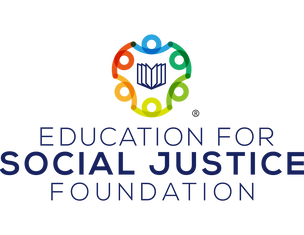Purpose:
This activity teaches students about the buildup of hostilities between the United States and Japan that led to the attack on Pearl Harbor & U.S. entry into WWII.
This lesson is recommended as an activity to be included as the first lesson in a unit on WWII.
Grade: 11- High school students taking a United States History course.
Objective: Students will understand why Japan attacked Pearl Harbor.
Standards: See end of lesson plan
Suggested Time: 1 class (roughly one hour of class time)
Unit context: This lesson is designed to be the first lesson of a unit on WWII.
Procedure: There are eight slides for direct instruction (lecture) on the immediate leadup to Japan’s attack on Pearl Harbor.
Included are two videos of FDR speaking, one includes a segment of his “Arsenal of Democracy” speech, the other a segment of the “Day of Infamy” speech. After each segment have students discuss with their partner what was significant about that speech.
After the lecture, hand out copies of the Timeline of US - Japan interactions and Significance Timeline Analyzer. Have students discuss the significant issues of the day with their partner and write their answer in the appropriate box. Next they will read through the timeline and choose which 5 events they think best answers the question of why Japan attacked Pearl Harbor and explain on the graphic organizer why they think those events are significant. They should then answer the questions on the back using the evidence they have chosen.
Materials/Handouts:
Standards:
2016/2017 History-Social Science Framework:
11.7.1 Examine the origins of American involvement in the war, with an emphasis on the events that precipitated the attack on Pearl Harbor.
This activity teaches students about the buildup of hostilities between the United States and Japan that led to the attack on Pearl Harbor & U.S. entry into WWII.
This lesson is recommended as an activity to be included as the first lesson in a unit on WWII.
Grade: 11- High school students taking a United States History course.
Objective: Students will understand why Japan attacked Pearl Harbor.
Standards: See end of lesson plan
Suggested Time: 1 class (roughly one hour of class time)
Unit context: This lesson is designed to be the first lesson of a unit on WWII.
Procedure: There are eight slides for direct instruction (lecture) on the immediate leadup to Japan’s attack on Pearl Harbor.
Included are two videos of FDR speaking, one includes a segment of his “Arsenal of Democracy” speech, the other a segment of the “Day of Infamy” speech. After each segment have students discuss with their partner what was significant about that speech.
After the lecture, hand out copies of the Timeline of US - Japan interactions and Significance Timeline Analyzer. Have students discuss the significant issues of the day with their partner and write their answer in the appropriate box. Next they will read through the timeline and choose which 5 events they think best answers the question of why Japan attacked Pearl Harbor and explain on the graphic organizer why they think those events are significant. They should then answer the questions on the back using the evidence they have chosen.
Materials/Handouts:
- Google Slide Deck: https://docs.google.com/presentation/d/16km7UIRr-8y-ZUS2NVFkooQPDoROkmGNm7Gx_dRHZHo/edit?usp=sharing
- Timeline of U.S. - Japan interactions: https://docs.google.com/document/d/143X1pYRLOQgJTn65Wzvep4CSMToWrBL6CLjKfrN6Uys/edit?usp=sharing
- Significance Timeline Analyzer from U.C. Berkeley History-Social Science Project: https://docs.google.com/document/d/1JeJB87879OscKG2TcMCaiiDkIOViQbNfz17PRiu-3Ek/edit
Standards:
2016/2017 History-Social Science Framework:
- Why did Americans not want to join World War II before the bombing at Pearl Harbor?
11.7.1 Examine the origins of American involvement in the war, with an emphasis on the events that precipitated the attack on Pearl Harbor.

